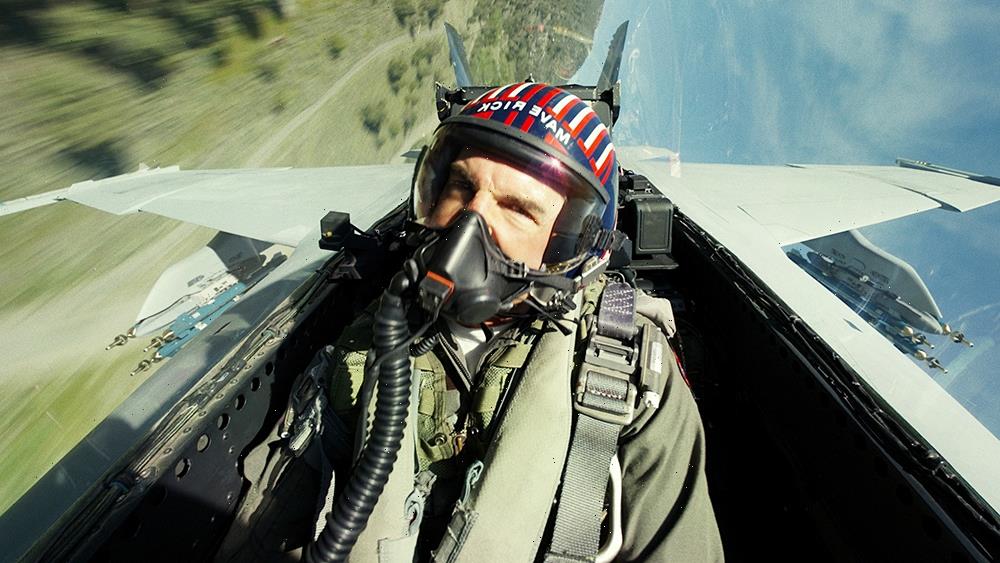
How the ‘Top Gun: Maverick’ Team Captured the Soaring Sound of Jets
12/16/2022When “Top Gun: Maverick” landed in theaters this summer, audiences around the world enjoyed the excitement of soaring through the sky alongside the Navy’s best of the best. One key to creating that sensation was building the perfect soundscape.
Director Joseph Kosinski describes the challenge, saying, “‘Top Gun’ was the test disc for everyone’s home entertainment system.” Adding to a monumental task were the restrictions brought on by the pandemic, as well as months of military negotiations, Navy contracts and detailed planning to bring the story of Maverick (Tom Cruise) back to the big screen.
Early on, supervising sound editor Al Nelson and sound effects editor Ben Burtt spent a week in the Atlantic aboard the USS Abraham Lincoln. Nelson recalls, “The idea was, ‘Let’s just get as much great raw material as we can.’” They collected a variety of sounds that included takeoffs and landings, radios, and “other great material that you can find on an aircraft carrier. The thumps, the purges and the mechanics. It was a week of getting into every nook and cranny we could to record and record and record.”
Production mixer Mark Wein-garten had to find a way to set up microphones in the F-18s to capture in-flight dialogue. He recalls: “Tom [Cruise] wanted to be able to start and stop the cameras with a single push button. And they wanted to be able to start and stop the sound recorder with the same push button.” After careful planning with various Navy departments, they developed a contained mic pack that could fit inside the actors’ costumes, capture the best sound and not be spotted on camera.
A pivotal scene comes when Maverick surreptitiously borrows an F-18 to show the young aviators their upcoming mission can be flown successfully. It was also one of the first sequences filmed because, like his onscreen counterpart, Cruise wanted the young actors to know they could film it safely. U.S. Navy Commander Frank “Walleye” Weiss flew Cruise through the canyon run, a physically demanding sequence in which the decorated pilot flew just 20 feet above the ground, sometimes 15 feet from the canyon walls, and more than 500 mph.
Editor Eddie Hamilton adds, “When you watch the scene, a lot of the sound is based around his efforts. The sounds of his breathing, and how much he’s having to force his body into different positions. You can also hear the sound of the joystick in the jet being punched from left to right. We dial that up in the sound mix so that you’re completely connected with Maverick as a character, and the forces being exerted on his body.”
Supervising sound editor James Mather adds, “We worked hard on frequencies and making sure there was enough variation between the close call sound effects — the big low end, sweeping sounds as it gets close to the edge of the canyon and the jet rush as it sweeps over the wings. Everything had to have a percussive impact.”
Bjorn Ole Schroeder, supervising sound editor at Skywalker Sound, elaborates: “We cut from this silence on the base, and then the exteriors were so loud with these planes, and then we cut to the inside. And there are moments where we’re quite loud, even with the interiors, but then when the intensity grows and we’re going into their heads, the sounds from the jets get dropped away a little bit and we go more into the character. Those are moments that I absolutely love.”
The scene was particularly emotional for re-recording mixer Chris Burdon, who says, “I remember watching that cue on my own and the hairs just rise on the back of my neck.” While mixing the dialogue and music for the sequence, he continues, “I found Eddie and went, ‘you’ve just blown my mind.’”
Re-recording mixer Mark Taylor commends the team at Skywalker for providing a library of real sounds.
“It’s quite easy to do a jet interior, but then to have a conversation that you have to stay in touch with and it be part of this story arc and not getting in the way of that. It’s nothing like I’ve ever mixed before. We literally go from a whisper to a roar.”
Read More About:
Source: Read Full Article

